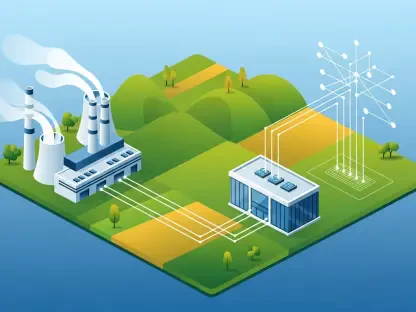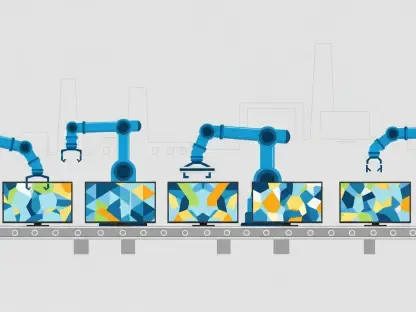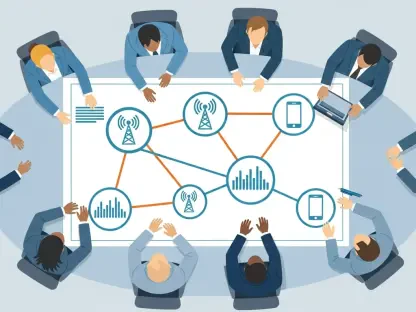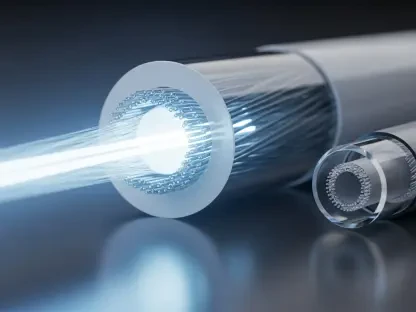In the telecommunications landscape, few voices are as authoritative as Vladislav Zaimov, a seasoned expert in enterprise telecommunications and the risk management of vulnerable networks. Zaimov joins us to unpack the latest advancements in DOCSIS 4.0, a technology set to redefine how we experience high-speed internet. With CableLabs’ recent success in achieving 14 Gbit/s downstream speeds, there’s much to discuss about the future of cable and broadband technology.
Can you explain what DOCSIS 4.0 is and how it differs from previous versions?
DOCSIS 4.0 represents a significant leap forward in cable technology, enhancing the capabilities of previous versions like DOCSIS 3.1. The key differences lie in its support for higher bandwidth and improved performance. While DOCSIS 3.1 offered impressive speeds, DOCSIS 4.0 introduces more robust modulation and supports symmetrical multi-gigabit speeds, which are crucial for activities like video conferencing and high-definition streaming.
How significant is CableLabs’ achievement of 14 Gbit/s downstream speeds in the recent DOCSIS 4.0 interop?
Achieving 14 Gbit/s is certainly a milestone, not just as a speed record but as proof of concept for the potential within our existing hybrid fiber-coax infrastructure. This achievement underscores that we can significantly enhance performance without an entirely new infrastructure, keeping fiber’s pace and perhaps reaching further in terms of longevity and adaptability.
What does the term “10G mandate” refer to, and how does the recent achievement compare to this goal?
The “10G mandate” is the cable industry’s initiative to offer internet speeds of 10 gigabits, comparable to fiber optics, which aims for network modernization and future-proofing. Surpassing this with 14 Gbit/s means we’re not only on track but potentially ahead of schedule, indicating the technology’s resilience and capacity for accommodating future needs.
What role does the 4096 QAM modulation play in achieving faster internet speeds?
4096 QAM, or Quadrature Amplitude Modulation, is essential in increasing data capacity within the existing spectrum. It allows for more data to be transmitted over the same frequencies, directly contributing to the remarkable downstream speeds like the 14 Gbit/s achieved during the interop, maximizing the efficiency of bandwidth usage.
How does DOCSIS 4.0 compare to fiber in terms of performance and longevity?
While fiber offers unmatched bandwidth potential, DOCSIS 4.0 stands out by capitalizing on existing cable infrastructure, providing similar performance at a reduced capital expense. Its longevity is embedded in the flexibility of expanding services as customer needs grow, offering a competitive alternative to full fiber networks.
Why is the support for symmetrical multi-gigabit speeds important for DOCSIS 4.0?
Symmetrical speeds address the increased demand for high upload speeds driven by cloud computing and telecommuting. This ensures users can upload as quickly as they download, a vital feature for businesses and anyone reliant on high-quality video calls or streaming from home.
How do the enhanced security and lower latencies of DOCSIS 4.0 benefit applications like online gaming?
With lower latencies, gamers experience less delay, creating a smoother, more responsive gaming experience. Enhanced security protects user data in interactions over the internet, essential as online transactions and personal data exchange become increasingly frequent in gaming ecosystems and beyond.
Can you discuss Comcast’s role in the deployment of DOCSIS 4.0 services and the features they are offering?
Comcast, being a front-runner, is leveraging DOCSIS 4.0 to deliver enhanced broadband services, already rolling out low-latency features. This deployment indicates their strategy to offer competitive services and suggests a full embrace of this technology to keep pace with consumer expectations for speed and reliability.
What are the potential next steps or improvements that the cable industry sees beyond DOCSIS 4.0?
Discussions are ongoing about further boosting downstream speeds up to 25 Gbit/s, possibly by advancing spectrum use to 3GHz. These improvements reflect a roadmap that continually adapts to the surging demand for faster and more dependable internet services.
Can you elaborate on the importance of interoperability among different vendors in the recent interop?
Interoperability ensures diverse vendor equipment works together seamlessly, preventing vendor lock-in and fostering innovation across the board. It’s crucial as it enables cable operators to adapt to technological advancements without being constrained by specific hardware or software.
What is the significance of testing different remote PHY device suppliers and cable modems in the recent interop?
Testing multiple suppliers and modems verifies that diverse technologies can function as a cohesive system. This is pivotal because it promotes flexibility and market competitiveness, allowing operators to deploy the most effective solutions for their specific contexts and challenges.
Why is interoperability considered a challenge in a traditionally siloed space?
Historically, telecommunications have seen disparate systems that don’t communicate well with each other, leading to inefficiencies and increased costs. Overcoming these silos through interoperability enhances adaptability and streamlines integration processes, directly benefiting service providers and consumers alike.
How does CableLabs plan to handle the formal certification of DOCSIS 4.0 modems?
CableLabs’ approach involves rigorous testing and validation of modems, ensuring they meet set performance and interoperability standards before certification. This thorough process will guide the industry in delivering reliable, high-performance services as DOCSIS 4.0 is implemented more widely.
Can you provide examples of companies or operators that are currently planning or implementing DOCSIS 4.0 upgrades?
Comcast, Liberty Global, and Charter Communications are actively pursuing DOCSIS 4.0 upgrades. For example, Comcast’s “X-Class Internet” brand using D4.0 technology exemplifies the commitment to pioneering next-generation broadband services.
How is CableLabs supporting these operators in their transition to DOCSIS 4.0?
CableLabs offers operators technical guidance and enables active participation in interop events, which are platforms for widespread R&D and innovation. Their support ensures a smooth transition and alignment with industry standards, helping operators fully capitalize on the capabilities of DOCSIS 4.0.
What can attendees expect from CableLabs’ next DOCSIS 4.0 interop event in August?
The upcoming interop will likely showcase further technological advancements and vendor collaborations. It’s a chance to build on previous achievements and set new benchmarks for the industry’s capability to deliver superior broadband services.
Do you have any advice for our readers?
Stay informed and adaptive to technological advancements in telecommunications. As the industry evolves, embracing new technologies like DOCSIS 4.0 can offer exciting opportunities and benefits, both personally and professionally. Always consider how these changes could impact your businesses or daily life and prepare to pivot as needed.









